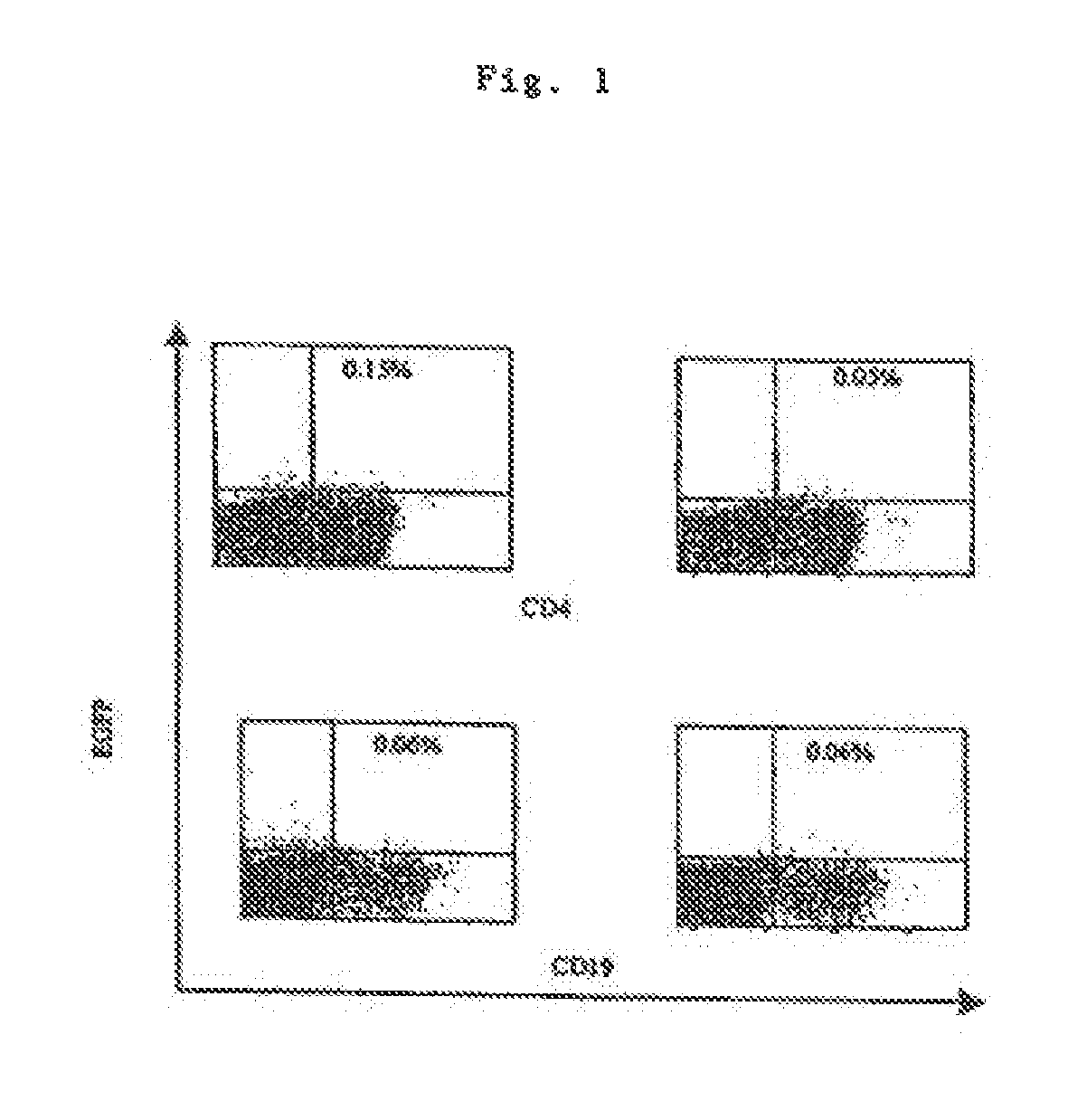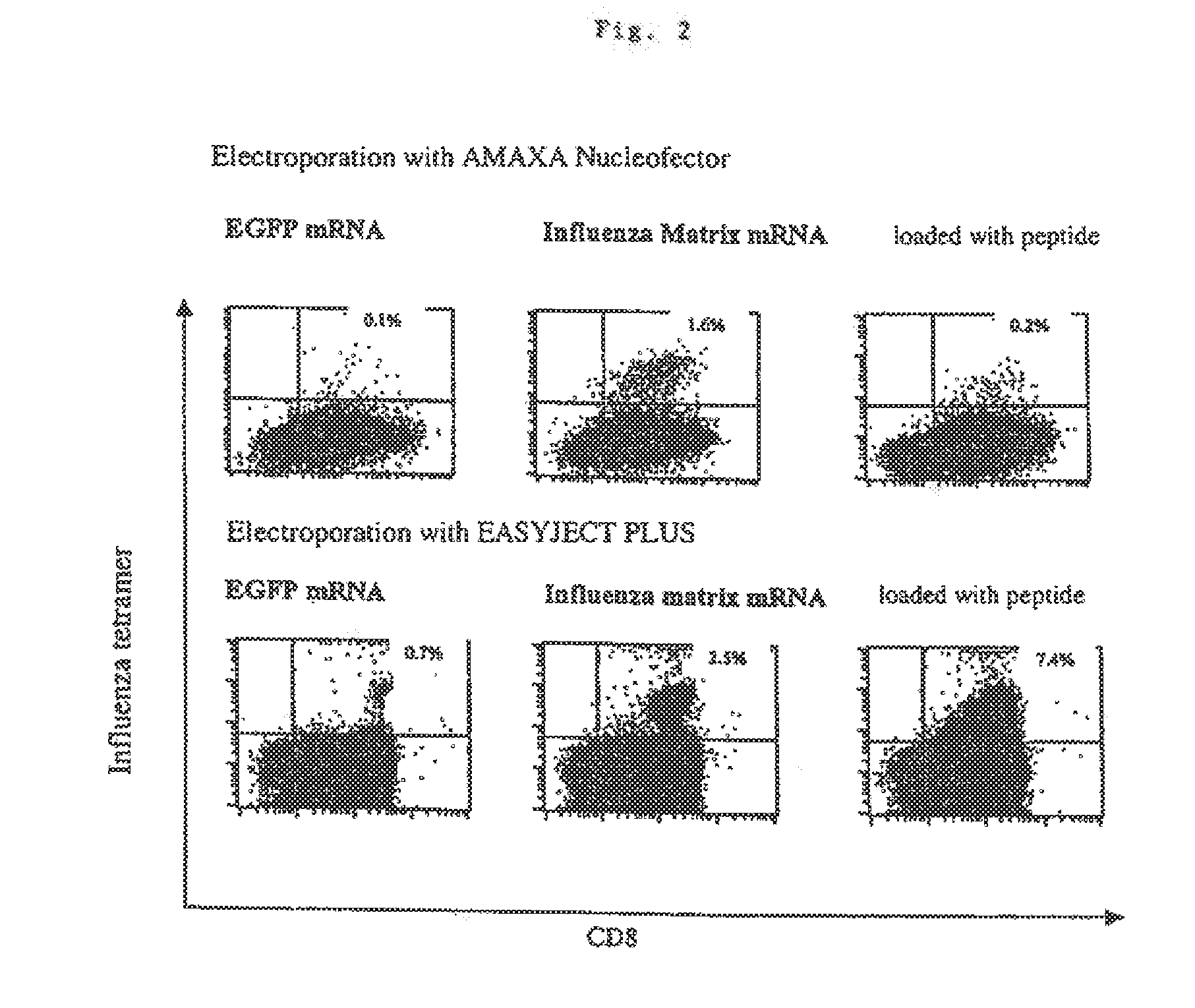Transfection of blood cells with mRNA for immune stimulation and gene therapy
a technology of immune stimulation and gene therapy, applied in the field of pharmaceuticals, can solve the problems of long procedure and high cost of procedur
- Summary
- Abstract
- Description
- Claims
- Application Information
AI Technical Summary
Benefits of technology
Problems solved by technology
Method used
Image
Examples
example 1
Isolation of PBMCs
[0080]Peripheral blood mononuclear cells were isolated from healthy HLA-A0201-positive donors. Mononuclear cells were obtained by Ficoll-Hypaque gradient centrifugation. The PBMCs obtained were washed three times with PBS.
example 2
Transfection of PBMCs by Electroporation
[0081]The PBMCs obtained were transfected using the Nucleofector apparatus and the Human B-Cell Nucleofector Kit (both from AMAXA GmbH, Cologne, Germany) according to the manufacturer's instructions. 4×106 cells were transfected with 5 micrograms of RNA per transfection.
[0082]The monoclonal antibodies CD4-PerCP and CD19-PE (both from BD Pharmingen) were used for the immune phenotyping of PBMCs transfected with the EGFP mRNA.
[0083]After transfection, 1.5×106 cells were incubated to maturity in 24 well culture dishes (Greiner) in 1.5 ml of X-Vivo 15 medium (Bio Whittaker, Belgium) containing 100 mg / ml of LIPS (Sigma, Deisenhofen, Germany) and 2.5 mg / ml of TNF-α (R&D Systems). As the positive control, non-transfected mature PBMCs were loaded for 1 h with 1 mg / ml of the HLA-A*0201-restricted peptide (GILGFVFTL) of the influenza matrix protein. After incubation for 24 h, the mature PBMCs were washed with medium. The cells were then used to stimulat...
example 3
Expression of EGFP in Human PBMCs Transfected In Vitro
[0084]mRNA coding for EGFP Was transfected into fresh human PBMCs by electroporation (or lipofection, data not shown). One day after transfection the expression of EGFP in cells labelled with fluorescent monoclonal antibodies (anti-CD4 for T helper cells or anti-CD19 for B cells) was studied by FACS analysis. As shown in FIG. 1, some CD4-positive cells have taken up the mRNA and expressed EGFP. In some cases an expression of EGFP could also be found in E cells as well as in other cells that are not B or T cells, e.g. monocytes (not shown).
PUM
| Property | Measurement | Unit |
|---|---|---|
| temperatures | aaaaa | aaaaa |
| time | aaaaa | aaaaa |
| time | aaaaa | aaaaa |
Abstract
Description
Claims
Application Information
 Login to View More
Login to View More - R&D
- Intellectual Property
- Life Sciences
- Materials
- Tech Scout
- Unparalleled Data Quality
- Higher Quality Content
- 60% Fewer Hallucinations
Browse by: Latest US Patents, China's latest patents, Technical Efficacy Thesaurus, Application Domain, Technology Topic, Popular Technical Reports.
© 2025 PatSnap. All rights reserved.Legal|Privacy policy|Modern Slavery Act Transparency Statement|Sitemap|About US| Contact US: help@patsnap.com


